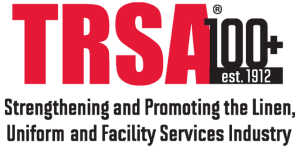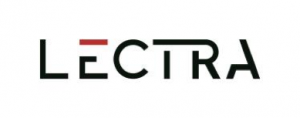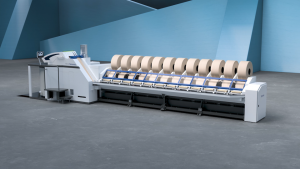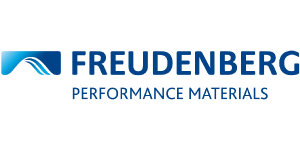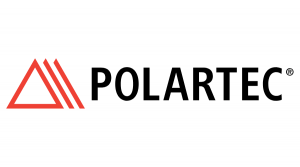 SPARTANBURG, S.C.— September 13, 2024 — Polartec, a Milliken & Company brand and the creator of innovative and sustainable textile solutions, is proud to announce that its Power Shield™ Pro fabric, which incorporates Biolon™* plant-based nylon, has won the prestigious 2024 R&D 100 Award in the Mechanical/Materials category. This global competition, now in its 62nd year, recognizes revolutionary scientific and technicological innovations from 16 countries. Winners are selected by an expert judging panel of 56 well-respected industry professionals from across the world.
SPARTANBURG, S.C.— September 13, 2024 — Polartec, a Milliken & Company brand and the creator of innovative and sustainable textile solutions, is proud to announce that its Power Shield™ Pro fabric, which incorporates Biolon™* plant-based nylon, has won the prestigious 2024 R&D 100 Award in the Mechanical/Materials category. This global competition, now in its 62nd year, recognizes revolutionary scientific and technicological innovations from 16 countries. Winners are selected by an expert judging panel of 56 well-respected industry professionals from across the world.
 Building on the performance legacy of Polartec® NeoShell™ – a 2012 R&D 100 Award winner – Polartec Power Shield™ Pro is a planet conscious** weather protection shell fabric technology, made with Biolon nylon. The highly durable, extremely breathable non-PFAS monolithic membrane construction provides 20/20 breathable waterproof protection (20k mm water resistance (ISO 811) / 20k g/m2/24hrs breathability (JIS L1099, B1). As a result, it stops rain and snow getting in, while allowing body moisture to escape. Made to withstand wear and tear for resilience you can rely on, its 48 percent plant-based content also lowers carbon footprint by up to 50 percent and reduces reliance on fossil fuels without impacting human food sources.*▲ All of which proves that expedition-grade weatherproof performance can be achieved with more sustainable practices.
Building on the performance legacy of Polartec® NeoShell™ – a 2012 R&D 100 Award winner – Polartec Power Shield™ Pro is a planet conscious** weather protection shell fabric technology, made with Biolon nylon. The highly durable, extremely breathable non-PFAS monolithic membrane construction provides 20/20 breathable waterproof protection (20k mm water resistance (ISO 811) / 20k g/m2/24hrs breathability (JIS L1099, B1). As a result, it stops rain and snow getting in, while allowing body moisture to escape. Made to withstand wear and tear for resilience you can rely on, its 48 percent plant-based content also lowers carbon footprint by up to 50 percent and reduces reliance on fossil fuels without impacting human food sources.*▲ All of which proves that expedition-grade weatherproof performance can be achieved with more sustainable practices.
Indeed, Polartec Power Shield Pro is a first-of-its-kind weather protection made from renewable, non-GMO plant-based nylon and an innovative non-PFAS membrane. In addition to being soft, flexible and highly versatile, it offers exceptional durability while delivering a 50-percent lower carbon footprint than virgin nylon 6,6, the gold standard against which other nylons are measured. In addition, its chemical free composition is created in a bluesign® certified facility, ensuring its more responsible and sustainable manufacturing. And by mimicking the strength and pliability of traditional nylon, Power Shield Pro ensures long-lasting protection in addition to setting a new benchmark for environmentally-friendly performance fabrics.
Ramesh Kesh, senior vice president – Government & Defense and Polartec at Milliken & Company, said, “We are honored to receive such a prestigious award. Power Shield™ Pro exemplifies our commitment to pushing the boundaries of sustainable textile innovation. This recognition highlights that with the right technology, we can deliver high-performance materials that are also environmentally responsible while advancing eco-engineering trends that will define the future of our industry.”
“Power Shield Pro not only advances weather protection but does so while significantly reducing environmental impact,” said Karen Beattie, director of Product Management at Polartec. “Our dedication to sustainability doesn’t stop with raw materials. The Power Shield Pro membrane technology is based on molecular diffusion, ensuring high durability and extending the life of garments. This ultimately helps reduce the need for frequent replacements, further lowering the carbon footprint of outdoor apparel.”
* Biolon™ is a trademark of Milliken & Company.
**The Biolon™ nylon plant-based content within Power Shield™ Pro reduces reliance on fossil fuels and lowers carbon footprint by up to 50% compared with virgin Nylon-6,6.
*▲ Biolon™ plant-based inputs account for about 45-48% of the nylon in our fabrics and membranes, which lowers carbon footprint and reliance on fossil fuels by 50%, without impacting on human food sources.
©2024 Polartec, LLC. Polartec® is a registered trademark of MMI-IPCO, LLC. Biolon™ is a trademark of Milliken & Company.
Posted: September 13, 2024
Source: Polartec, a Milliken & Company brand
 OBERTSHAUSEN, Germany — September 16, 2024 — As of September 1, 2024, Stefan Lux has taken over as the managing director of KM.ON GmbH. The computer science graduate has taken over the role from Carla Janz, the KM.ON head of Human Resources, who served as interim director after the departure of Maximilian Kürig. He will also lead the KM.ON Business Unit of the KARL MAYER GROUP.
OBERTSHAUSEN, Germany — September 16, 2024 — As of September 1, 2024, Stefan Lux has taken over as the managing director of KM.ON GmbH. The computer science graduate has taken over the role from Carla Janz, the KM.ON head of Human Resources, who served as interim director after the departure of Maximilian Kürig. He will also lead the KM.ON Business Unit of the KARL MAYER GROUP.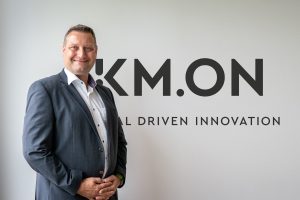 Stefan Lux brings a successful and varied professional background to the role.
Stefan Lux brings a successful and varied professional background to the role.
